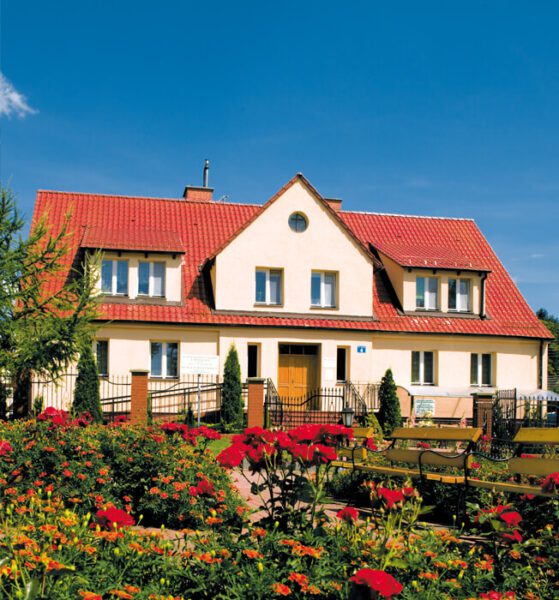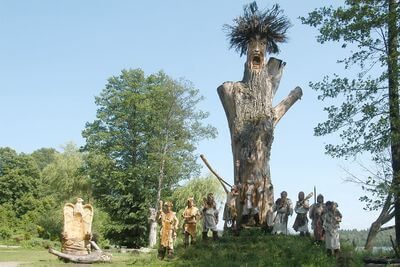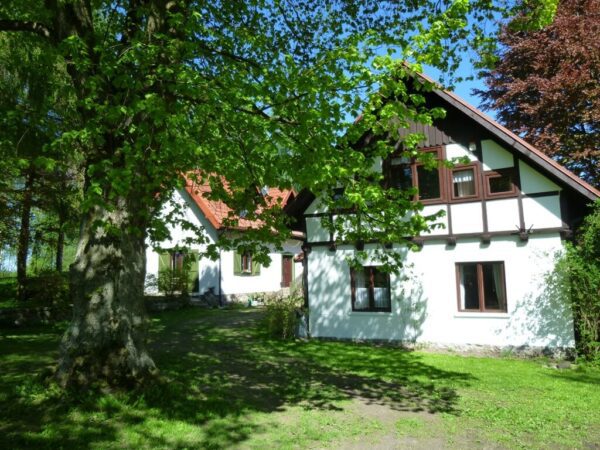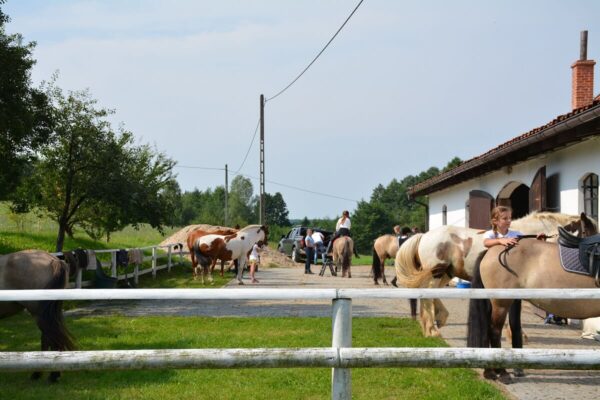Masuria unknown
Masuria – This is where we come from
How exactly was Masuria created? Where did they come from on the maps of Poland and the world? And we are not talking about geographical or historical origins. Let’s go a little deeper into the recesses of stories, legends and folk tales. There are two beautiful stories – one rooted in the Christian religion, and the other in stories passed down from generation to generation among the indigenous peoples of these lands.
We invite you to an extraordinary journey among legends and tales passed down from generation to generation.
Masuria created by God
When God made the earth, he decided to rest. He looked at his handiwork and discovered a deep hole in one place. It was the place where Masuria is now located. God decided to fill the cavity, but he had nothing to do. Therefore, from all over the globe, he carried various materials with his hands. He built mounds and hills out of mountain rocks and stones. He brought clay from the lowlands, and sand from the deserts. They created the Masurian soil. From some huge swamps, he created the Masurian quagmire. He divided the forest into many smaller forests. From the lands rich in underground treasures, he collected some iron ore and peat deposits. Many times his hands carried the water and poured out into the depressions. This is how numerous lakes were created. A varied Masurian landscape was created.
The creation of Masuria in the legend
Thousands of years ago, a beautiful giantess lived in the land of Masuria, who wore a string of wonderful pearls around her neck. Whoever saw these pearls forgot about their troubles. The young giant fell in love with this beautiful girl and wanted to marry her, but she refused him and began to run away from the giant urgent to get married. During the escape, a string of pearls broke and they scattered throughout Masuria, turning into lakes. In the place where the whole pearl fell, lakes with circular shapes were formed. Where the pearl crashed as it fell, lakes with irregular shapes were formed. Despite the change into lakes, pearls retained their secret power.
Masuria which you have not met yet…
What can you see in Masuria? Asking such a question to people not related to our region, we will certainly receive the same answers: Mikołajki, Mrągowo, Giżycko or Węgorzewo. But is Masuria just all these beautiful cities? Will there be something for someone who has been to Masuria five or ten times? What can you actually see here apart from what everyone recommends? Well, a lot! And we’ll prove it in a moment. We invite you on a tour of the little-known!
Mikołajki and what’s behind copper
What can you see in Mikołajki? Of course, apart from the city itself, with its charming streets, old architecture intertwined with modernity, or a promenade right above the mirror of Lake Mikołajskie?
Museum of the Polish Reformation – one of the often overlooked, but fortunately in recent years more and more recognizable attractions of Mikołajki. Masurians were Evangelicals and to this day this region, next to Cieszyn Silesia, is an enclave of Polish Evangelicals. Anyone who wants to learn more about the Masurian Evangelical religion and its history should visit the Reformation Museum and talk to its custodian.

Another interesting point is the panorama from the observation tower of the church of St. Nicholas. The church is a modern temple and tourists love to visit it as they can climb the lookout tower from which you can see all of Mikołajki and the surrounding lakes. In the distance you can even see Lake Łuknajno, which is a mute swan reserve. Before you come here, check the plaque in front of the church or at the tourist information desk when the tower is open to visitors.

Not many tourists reach the old Jewish cemetery in Mikołajki. It is a pity, because at present it is the largest and best-preserved Jewish cemetery in Masuria. Jews used to be part of the Masurian community, which was brought to an end in Mikołajki by the events of Kristallnacht in 1938. This is the year in which the last Jews were buried at the Mikołajki cemetery.

AND JUST BEHIND THE COPPER…
Only 4 km from Mikołajki, we will find ourselves in the village of Łuknajno. It is here that we run our second facility, Folwark Łuknajno. A place close to nature, located on the shores of Lake Śniardwy. In our area, in addition to accommodation, a home restaurant, and a campsite, you can rest on the shores of the lake and admire the beautiful panorama of the lake from the observation tower. On the other side of the building, following a narrow path just behind the information boards, you will reach the observation tower on Lake Łuknajno – a real Mecca for ornithologists and nature lovers, entered on the UNESCO list. On the surface of the lake you can admire unusual species of birds, and in the autumn even thousands of mute swans.

Once upon a time, the area of Mikołajki was inhabited by the Galindian tribes. If you want to feel like in the old days, go to Iznota, to Galindia. The atmosphere created by the owners here allows it to move into the times of the Baltic tribe. Organized trips are “attacked” by people in skins, trees grow upside down here, dungeons are inhabited by demons. Guests can genuinely participate in the reconstruction of customs and spread the ideas of the Galindians together.

In Marcinkowo near Mrągowo, we can move to a truly fairy-tale place, full of nature and passion for nature – “Gardens with passion”. In addition to the amazing amount of themes and styles of gardens, from Egyptian, Japanese or Moroccan, to Mediterranean, rose and love, we also find an offer of workshops and ecological classes.

MAZURIAN EDUCATION FARM
The region of Warmia and Mazury associates the Polish Network of Educational Farms, of which there are as many as 20 in our voivodeship! These are places where, in addition to the natural values, guests can experience workshops or the everyday life of agritourism places. Each of these places offers one-day programs, with or without an overnight stay. Below we present a few of them and we invite you to take advantage of their offer.
In the “Zielona Dolina” farm in Marcinków near Mrągowo, the owners carefully cultivate old traditions. There you can try eggs from rural hens, fragrant apples from the orchard or delicious traditional bread baked in the oven. A place away from other farms, in the center of which stands a nineteenth-century building in a typical half-timbered style.

Another interesting item on the farm’s map is Siedlisko Nawiady, located about 25 km from Mikołajki. The specificity of the farm is horse breeding and the cultivation of certified vegetable gardens, orchards and meadow crops. This knowledge is mostly passed on to older teens and adults.

The Mazurian gold is certainly the best honey in Poland. We recommend a trip to the village of Gnatowo near Kętrzyn. The farm organizes educational activities and beekeeping workshops. On site, you can try different varieties of honey (including those entered on the List of Traditional Products), make beeswax candles yourself or pour a jar of honey that you can take with you.

